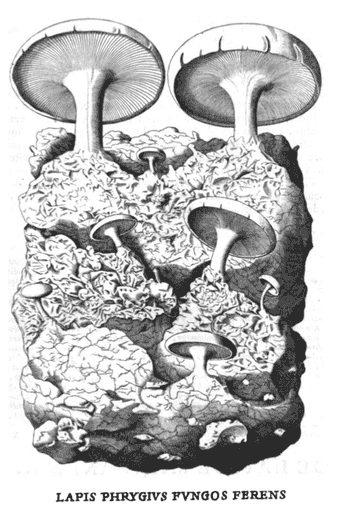Lapis Phrygius
Hajar Afroji (Unani) Metallotheca Vaticana, Mercati, 1719
Metallotheca Vaticana, Mercati, 1719|
Dioscorides: ‘The Phrygian stone the dyers in Phrygia use (hence its name) is found in Cappadocia. The best is pale and mildly heavy, not firm from compaction, with partitions of white in-between like cadmia. The stone is burnt as follows. Moisten it with the best wine, cover it with live coals, and blow on it continuously. When it changes colour to a more deep yellow, take it out, quench it with the same wine, place it into the coals again, then do the same things and burn it a third time, taking care that it does not crumble and vanish into soot. Both raw and burnt it is effective with stiff ointment for binding, cleaning, forming scabs, and healing burns. It is washed like cadmia’. |
Avicenna: ‘It is a desiccant drug with some astringent, irritant and dissolving properties’. Salmon, Seplasium: Called in Greek Lithos Phrygius; in Latin Phrygius, Lapis Phrygiae; in English, the Phrygian Stone. Found in Arabia and Phrygia, generated of a pumicose earth. Dioscorides said its very astringent, yet purges. Applied with wax it helps burns according to Pliny and Isidore. Galen says it dries strongly and profits against putrid Ulcers and diseases of the eyes but it must be washed as Cadmia. |
